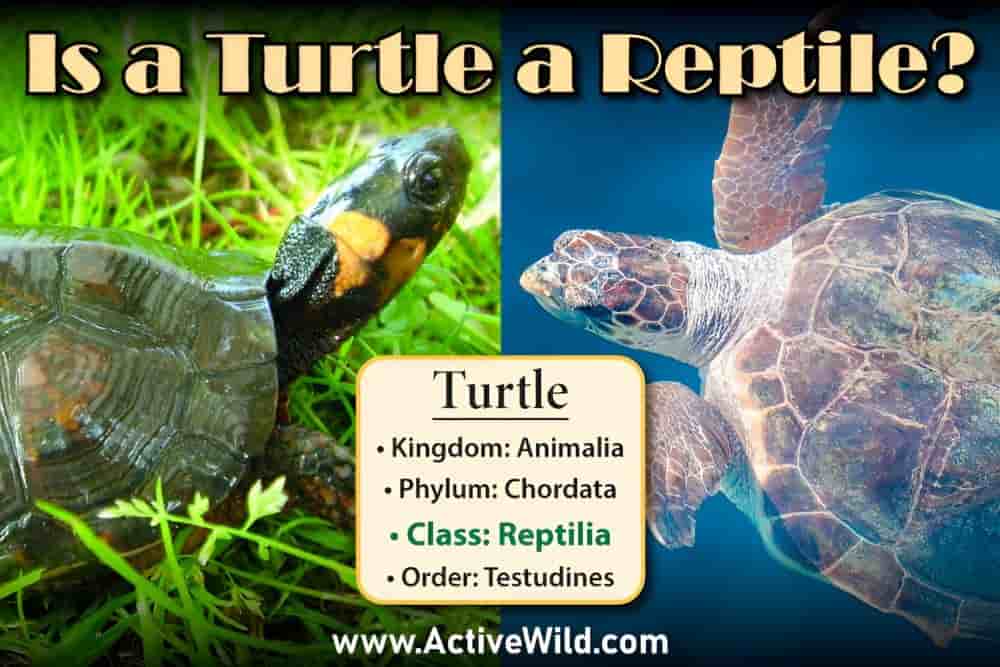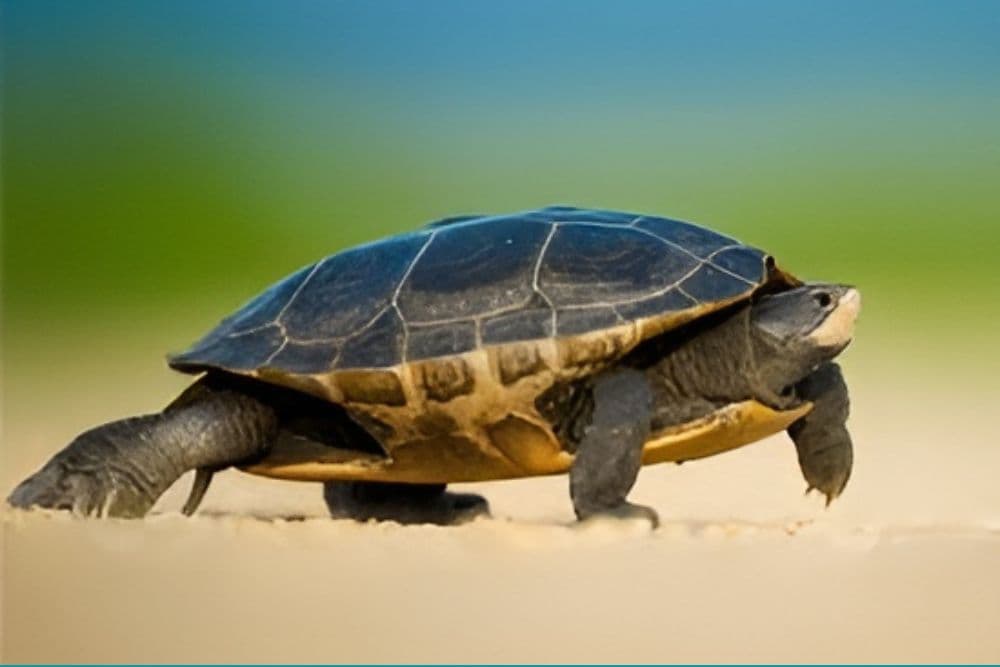Are Turtle’s Reptiles? Turtles are one of the oldest vertebrates, with fossil records tracing their existence back over 220 million years. In almost every environment, from rivers and oceans to deserts, turtles have adapted to diverse ecosystems across the globe. Yet, despite their prevalence and the long-standing fascination they evoke, the classification of turtles has sparked numerous debates within the scientific community. Many wonder: Are turtle’s reptiles, or belong to a unique classification?
This article provides an in-depth exploration of turtle classification and characteristics, clarifying their position within the animal kingdom. Are Turtle’s Reptiles? By understanding the features that define reptiles, we can better appreciate how turtles fit within this classification and what makes them unique among reptile species.
What Defines a Reptile?
Are Turtle’s Reptiles? To determine if turtles are reptiles, it’s essential first to understand what characterizes a reptile. Reptiles are a class of animals known as Reptilia, a group distinguished by several common traits, including:
- Ectothermy: Reptiles are ectothermic (cold-blooded), which means they rely on external environmental conditions to regulate their body temperature.
- Scaly Skin: They possess dry, scaly skin that helps retain moisture, an adaptation that allows many reptiles to survive in arid environments.
- Lungs for Breathing: Unlike amphibians, reptiles exclusively breathe through the lungs and do not go through a metamorphosis that involves aquatic and terrestrial stages.
- Amniotic Eggs: Reptiles lay eggs with a protective amniotic membrane, which provides a nutrient-rich environment for the developing embryo. This adaptation enables many reptiles to lay their eggs on land instead of in water.
Are Turtle’s Reptiles? Reptiles are broadly classified into several major groups, including Squamata (lizards and snakes), Crocodylia (crocodiles and alligators), and Testudines’ (turtles and tortoises). Each group has unique features and adaptations, but all share the fundamental traits that define reptiles. Turtles fall under the Testudines’ order, which supports their classification as reptiles.
Critical Characteristics of Turtles That Make Them Reptiles

- Ectothermic (Cold-Blooded) Nature
Are Turtle’s Reptiles? Like other reptiles, turtles are ectothermic. They rely on environmental heat sources to regulate their body temperature, often basking in the sun to warm up. This behavior is frequently seen in turtles, particularly in aquatic and semi-aquatic species. Cold-blooded animals like turtles have adapted to conserve energy by slowing down their metabolic rate, which is why turtles are known for their slow movements and long lifespans.
- Unique, Protective Shells
A defining feature of turtles is their shell, composed of two main parts: the carapace (upper shell) and the plastron (lower shell). The shell provides protection from predators and helps turtles absorb heat, which is a role in thermoregulation. This shell structure, formed from modified rib bones, is unique among reptiles and distinguishes turtles from other class members.
- Lungs for Respiration
While many aquatic animals rely on gills for breathing, turtles, like all other reptiles, possess lungs. This feature allows them to breathe air, even though aquatic turtles have adaptations that enable them to stay submerged for extended periods. They can absorb some oxygen through specialized areas of their bodies, but ultimately, turtles must surface for air, a trait that aligns them with terrestrial reptiles.
- Reproduction and Amniotic Eggs
Turtles lay eggs with an amniotic membrane, typical of reptiles. This membrane protects and nourishes the developing embryo, allowing turtles to lay their eggs on land or in protected sandy areas near water. The amniotic egg is a critical adaptation that has allowed reptiles, including turtles, to thrive in terrestrial environments by reducing the dependency on water for reproduction.
- Scaly Skin
Unlike other reptiles, turtles have scaly skin on their legs, necks, and tails despite having a hard shell. These scales help prevent water loss, an adaptation that aids survival in both terrestrial and aquatic environments.
Differences Between Turtles and Other Reptiles
Though turtles share fundamental reptilian traits, they also possess unique characteristics that set them apart from other reptile groups.
- Shell Structure and Function
Unlike other reptiles, turtles have a hard, bony shell from fused ribs and vertebrae. This shell limits their flexibility and movement, impacts their overall body structure, and gives them a distinct appearance. The shell is an evolutionary adaptation for defense and a defining feature that makes turtles unique among reptiles.
- Slow Metabolism and Longevity
Turtles are renowned for their slow metabolism and impressive longevity, with some species living over 100 years. This slow metabolism is partly due to their ectothermic nature, but it’s unusually pronounced in turtles compared to other reptiles, contributing to their reputation for longevity and resilience.
- Unique Evolutionary Lineage
Though turtles belong to the reptile class, their ancient lineage diverged early in reptilian evolution. Fossil evidence shows that turtles have existed for over 200 million years, predating snakes, lizards, and even dinosaurs. This long evolutionary history has given turtles a unique place in the reptilian family tree.
Are Turtle’s Reptiles? Types of Turtles and Their Habitats

Are Turtle’s Reptiles? Turtles are a diverse group, with over 300 species classified into different categories based on habitat and lifestyle:
- Aquatic Turtles
Aquatic turtles, such as the red-eared slider and painted turtle, spend most of their time in water, though they must surface for air. They have webbed feet for swimming and flat, streamlined shells that make them agile in the water.
- Semi-Aquatic Turtles
Semi-aquatic turtles, such as box turtles, live in environments with access to land and water. These turtles are known for their adaptability and are often found near marshes, ponds, or streams, where they can forage for food and bask in the sun.
- Terrestrial Turtles (Tortoises)
Tortoises are terrestrial turtles that live on land. Tortoises, recognized for their domed shells and strong legs, are well adapted to life on land. Depending on the species, they primarily inhabit deserts, grasslands, and tropical forests. Unlike their aquatic counterparts, tortoises have clawed feet, which makes them ideal for walking on land.
- Sea Turtles
Sea turtles, such as the green seaand leatherback turtle, live in oceans and are highly adapted to marine life. They have flipper-like limbs for swimming and travel long distances searching for food and nesting sites. Sea turtles come ashore only to lay their eggs, after which the hatchlings journey to the ocean.
Turtles’ Evolutionary Journey
Are Turtle’s Reptiles? Turtles are one of the oldest living groups of reptiles, with fossil records tracing their origins back over 220 million years. They first appeared during the Triassic period, alongside the earliest dinosaurs. Over millions of years, turtles have survived significant environmental changes, including ice ages, shifting continents, and the extinction events that wiped out many other species.
Turtles’ unique characteristics, such as their hard shells and efficient respiration system, have contributed to their survival across eras. Are Turtle’s Reptiles? Their adaptability to various environments, from oceans to deserts, demonstrates their resilience and the thriving nature of their evolutionary lineage within the reptilian family.
Common Misconceptions About Turtles

- Turtles Are Amphibians: While turtles spend time in water, they are not amphibians. They belong to the reptile class because they breathe through their lungs, lay amniotic eggs, and have scaly skin, all typical reptilian traits.
- All Turtles Live in Water: While many are aquatic, some, like tortoises, are fully terrestrial. Are Turtle’s Reptiles? adapted to various environments, and not all species are water-dwelling.
- Turtles Are Slow-Moving Creatures: Though some turtles, especially tortoises, are slow on land, certain species, such as sea turtles, are fast swimmers and can cover vast distances quickly in the water.
Conclusion
Are Turtle’s Reptiles? sharing fundamental characteristics with their reptilian relatives, such as cold-bloodedness, scaly skin, lung-based respiration, and amniotic eggs. While they have unique features, such as their iconic shell and distinct evolutionary lineage, turtles fit squarely within the reptilian classification, belonging to the Testudines’ order. From freshwater rivers and lush rainforests to arid deserts and vast oceans, turtles have adapted to nearly every ecosystem on Earth, demonstrating the resilience and versatility that have allowed This has allowed them to survive for more than 200 million years.
Are Turtle’s Reptiles? Understanding that turtles are reptiles clarifies their place in the animal kingdom and enhances our appreciation for these ancient, resilient creatures. Whether gliding through the ocean depths or basking on a sun-drenched rock, turtles continue to captivate us with their slow-paced yet enduring presence on Earth. We can foster a more profound respect and commitment to conserving these remarkable animals for future generations through better knowledge of their biology and ecological role.
FAQ:
Q: Are tortoises a reptile?
Ans: Yes, tortoises are reptiles. They are part of the same group as turtles and have a hard, protective shell.
Q: Why is a tortoise not a turtle?
Ans: Tortoises are exclusively land dwellers, while turtles spend most of their time in the water, either in oceans or freshwater bodies around the world, only coming to land to lay eggs. This adaptation to their respective habitats is reflected in their bodies.
Q: Why is a tortoise not a turtle?
Ans: Tortoises are exclusively land dwellers, while turtles spend most of their time in the water, either in oceans or freshwater bodies around the world, only coming to land to lay eggs. This adaptation to their respective habitats is reflected in their bodies.
Q: Why do tortoises live so long?
Ans: Giant tortoises clock in with a heart rate of about 10! There are several other factors also working in their favor for longevity, including genetic traits related to DNA repair, immune response and cancer suppression.















Leave a Reply